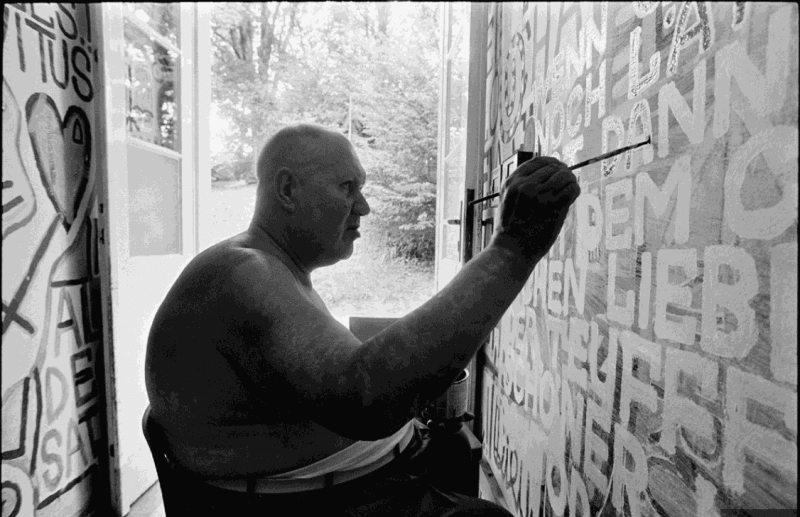August Walla Austrian, 1936-2001
Arguably the most versatile art brut artist of the 20th century, August Walla was born in 1936 in Klosterneuburg, Austria. He experienced a difficult childhood. Due to the untimely death of his father, he developed an unhealthy attachment to his mother, who would become his primary caretaker. After he threatened suicide at age 16 in 1952, Walla was diagnosed with schizophrenia, hospitalized until 1957, and released to his mother’s care (she was reportedly psychopathic).
In 1970, Walla was admitted to the hospital in Maria Gugging Psychiatric Clinic, and in 1986 became a resident in Dr. Navratil’s Center for Art and Psychotherapy, later named Haus der Kunstler (House of Artists). This visionary workshop broke new ground by allowing patients to live and work with dignity as artists, to express themselves freely, and to completely decorate their house, an activity that encouraged Walla to flourish and experiment with various media.
Walla took photographs, embroidered fabrics, drew, and painted, creating his own world—symbols, language, and gods—a mythological world that he would later visualize in brightly colored murals in his room. Further, he embellished his environs in and around the House of Artists in Gugging—interiors, exteriors, bridges, streets, and even the trees. Walla’s wildly expressive painting style is marked by a stylized, often grotesque figuration, and a bombastic use of text that both confronts his viewers with dramatic declarations, and visually activates each composition. He also worked with found objects to craft enigmatic assemblages—an integral part of his oeuvre.
Walla’s work reflects nothing less than an alternate universe in which good and evil avatars clash continually in epic conflict. The creativity and intelligence reflected in the artist’s reimagining of both religious and political symbolism is staggering. Walla appropriated major political symbols, reinventing them to transform his own gender expression from a feminine persona (the swastika) to a masculine one (hammer and sickle). Often misinterpreted as nonsense, his poetic, polyglot wordplay reflects a highly coded system of signification that marks his own construction of identity, and his universal cosmology.



